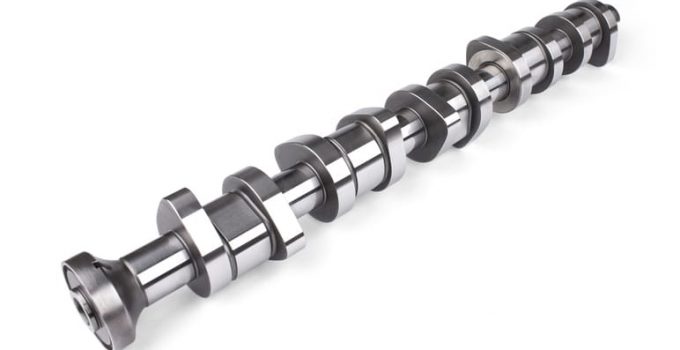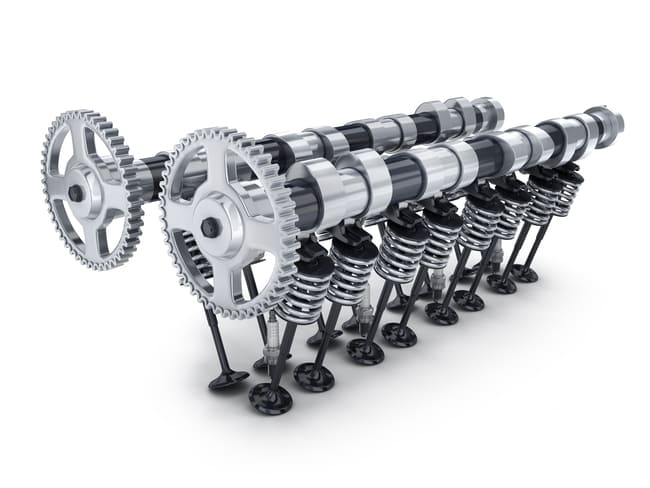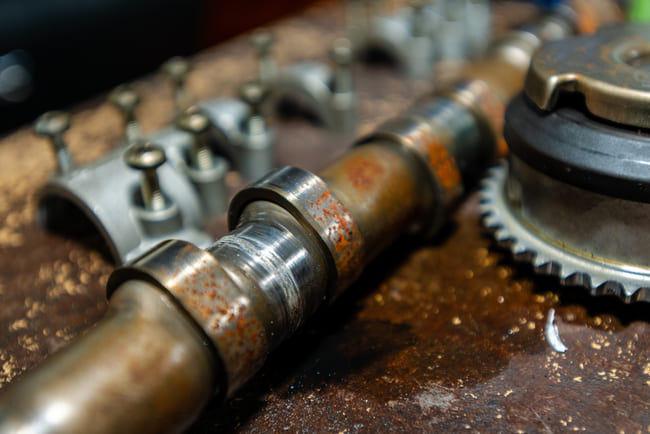
A car with an internal combustion engine cannot drive without a camshaft. This is because it is a particularly important component that is essential for engine operation. There are camshafts made of different materials. These include various sintered materials and types of steel. As a rule, the wear on a camshaft is low and it is a maintenance-free component whose service life corresponds to that of your engine. Therefore, in general, it can be said that a broken camshaft is rarely encountered. Nevertheless, as a driver, you should be aware of the function of your camshaft in the engine. Because only if you are well informed can you unequivocally assign the symptoms of a defective camshaft. If there is a problem with this component, it should be rectified as soon as possible so that irreparable engine damage does not occur. Please also note that a necessary repair of your camshaft in the car can be quite expensive. But first, let's start by explaining their function.
Contents
The function of the camshaft in the car

Before you can measure your camshaft or consider tuning the camshaft, you should first understand what its job is. As already mentioned, the main task of this engine component is to open and close the corresponding valves for the fuel/fuel-air mixture inlet and exhaust gas outlet. Of course, this must take place in a strictly coordinated manner, because incorrect timing impairs or prevents correct engine function. The number of cams present in this vehicle part corresponds exactly to the number of engine valves, as long as there is only a single camshaft. The cam can use rocker arms or so-called bucket tappets to apply pressure to the corresponding valve in order to open it. Since all valves to be controlled have a valve spring, they are automatically closed again as soon as the pressure from the cam is released. The camshaft is set in rotation with the help of the engine crankshaft. The engine toothed belt or the engine timing chain plays a decisive role here. Basically, the speed of the camshaft is a factor of two lower than that of your crankshaft. If your car is still using a very old engine model, the valve control can also be driven via spur gears. So-called in-line engines usually have two camshafts, but there are also engines that have a maximum of four camshafts. These include W, V or Boxer engines.
In general, the camshafts used to be installed under the engine, which required long tappets to the valves. Therefore, there were higher friction forces, so that these drive units coped less well with high speeds. In particular, if you are thinking of vehicle optimization via chip tuning, it is advisable to only do this on engines with overhead camshafts (also known as DOHC).
What is a Camshaft sensor and what is its task?
In addition to your camshaft itself, your camshaft sensor can also simply be defective. Modern vehicles rely on electronic engine control. The engine control unit not only ensures that the engine runs smoothly, but also optimizes its performance. This not only applies to direct engine performance, but also to the associated fuel consumption. Only modern engine controls have made it possible to reduce the petrol or diesel consumption of modern drive units to such an extent. However, these systems require a huge amount of data to do this. This also includes the detection of the camshaft movement by the camshaft sensor. This component is designed as a so-called Hall sensor. A symptom of a failure of this component can be, for example, that your check engine light is constantly on. However, other problems with the valve timing can also be traced back to a defective camshaft sensor. So before you tackle major repairs, you should first check the camshaft sensor.
What damage can occur on your camshaft?

While damage to your camshaft is rare, it does happen a whole bunch of different problems with this component. These can be defects in the actual component or damage to related components. As already described, a sensor can also be defective, so it is always good to check the camshaft sensor as well.
In many cases, the valve control is designed in such a way that the corresponding shafts are guided through so-called bearing shells. To ensure that these are adequately lubricated and that there is no major wear, the engine oil is also fed through the bearing shells via small recesses.

It is therefore also important for your camshaft that you use the right engine oil and that this is really regularly renewed according to the manufacturer's specifications. If there is no lubricating film, scoring and other signs of wear will form on the camshaft and bearing shells. Sooner or later the camshaft may rub and the cams no longer actuate all the valves correctly. If material is removed in this way, experts say that the camshaft has run in. In this case, the lift generated is no longer sufficient to open the valves or to keep them open for a sufficiently long time. Symptoms are a lack of engine power, a difficult engine start or increasing fuel consumption of your drive unit. To find out whether your camshaft has run in, you can also measure your camshaft or have it measured. Incidentally, a similar damage pattern can also occur if the camshaft seal no longer fulfills its function. In addition, the engine oil, which can then escape in the direction of the toothed belt, can also damage the engine toothed belt. If the supply of lubricant to the camshaft is poor, flushing the engine may help.
How to recognize a defect in the camshaft of your car?
A possible symptom of a broken camshaft can be unusual noises under your hood. If you want to check the camshaft today, a lamp is often sufficient, because these components are usually on top of the engine. This means that you can easily reach the camshaft with the lamp. If you do not have sufficient knowledge yourself, a mechanic will be happy to help you. In most cases, only the valve cover has to be dismantled. The so-called cam tracks should generally look spotless. If, on the other hand, you recognize grinding marks there, this can be an indication of one or more worn-in camshafts. Even if the engine timing changes significantly or you hear grinding engine noises, this can be due to a broken camshaft.
Conclusion
In the car, the camshaft controls the corresponding intake and exhaust valves of your combustion engine. This component is very stable, but problems can still arise. If this is the case, you should definitely entrust a specialist workshop with the repair. This is the only way to ensure that the engine timing is also exactly right in the end. If this is not the case, then at best there will be higher fuel consumption and reduced engine performance. In the worst case, however, serious engine damage occurs. In many cases, this represents a total economic loss on your vehicle.
A tip from CarTipsandmore: In the past, camshafts were often ground. Another name for this work is sharpening the camshaft. In addition to an expected increase in performance, this also served to repair this essential engine component in many cases. Nowadays, such a procedure is only carried out by very few specialist workshops, since in most cases it is hardly worthwhile from an economic point of view. We also advise you to have the camshaft rebuilt rather than attempting this type of repair.
